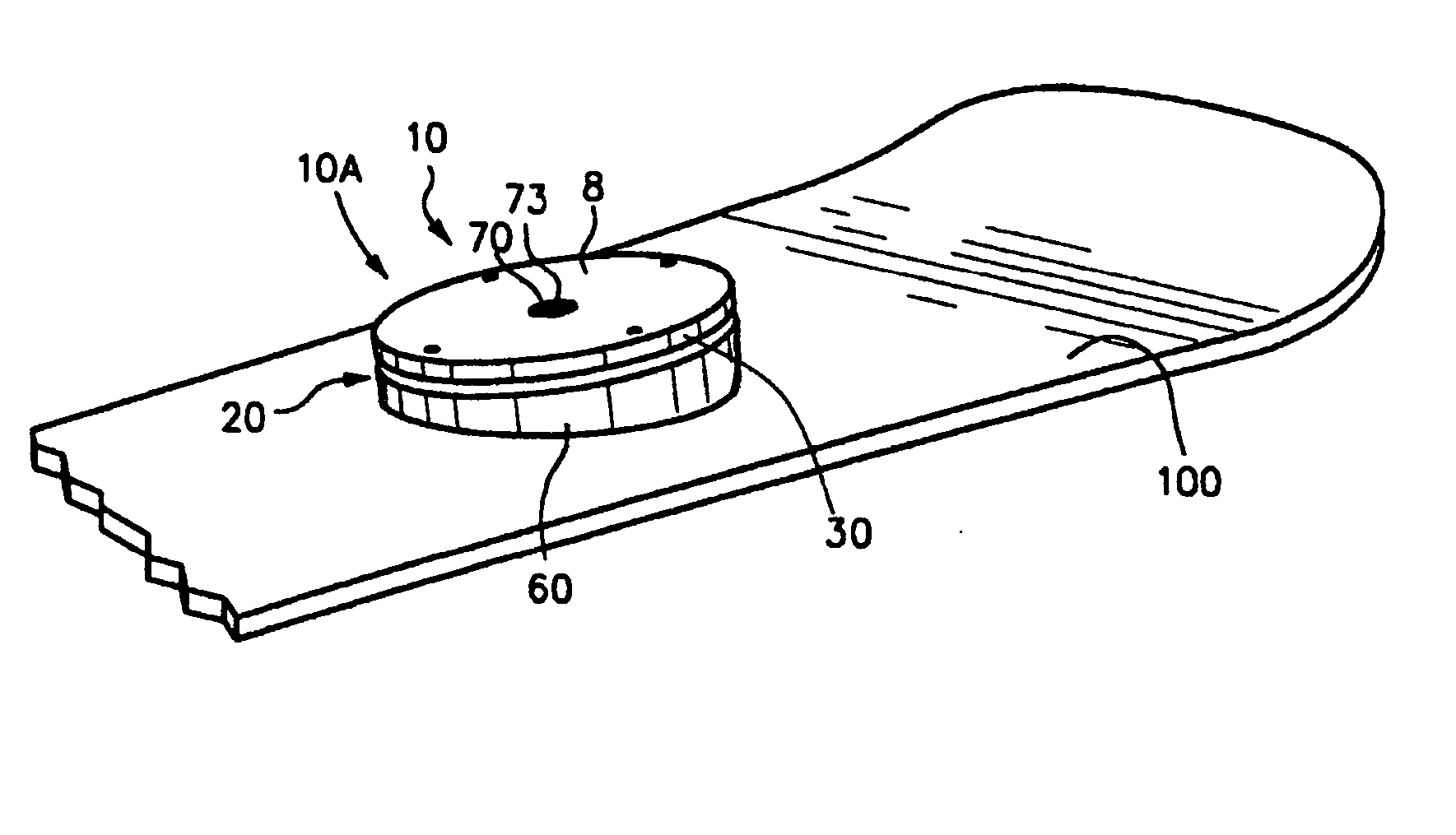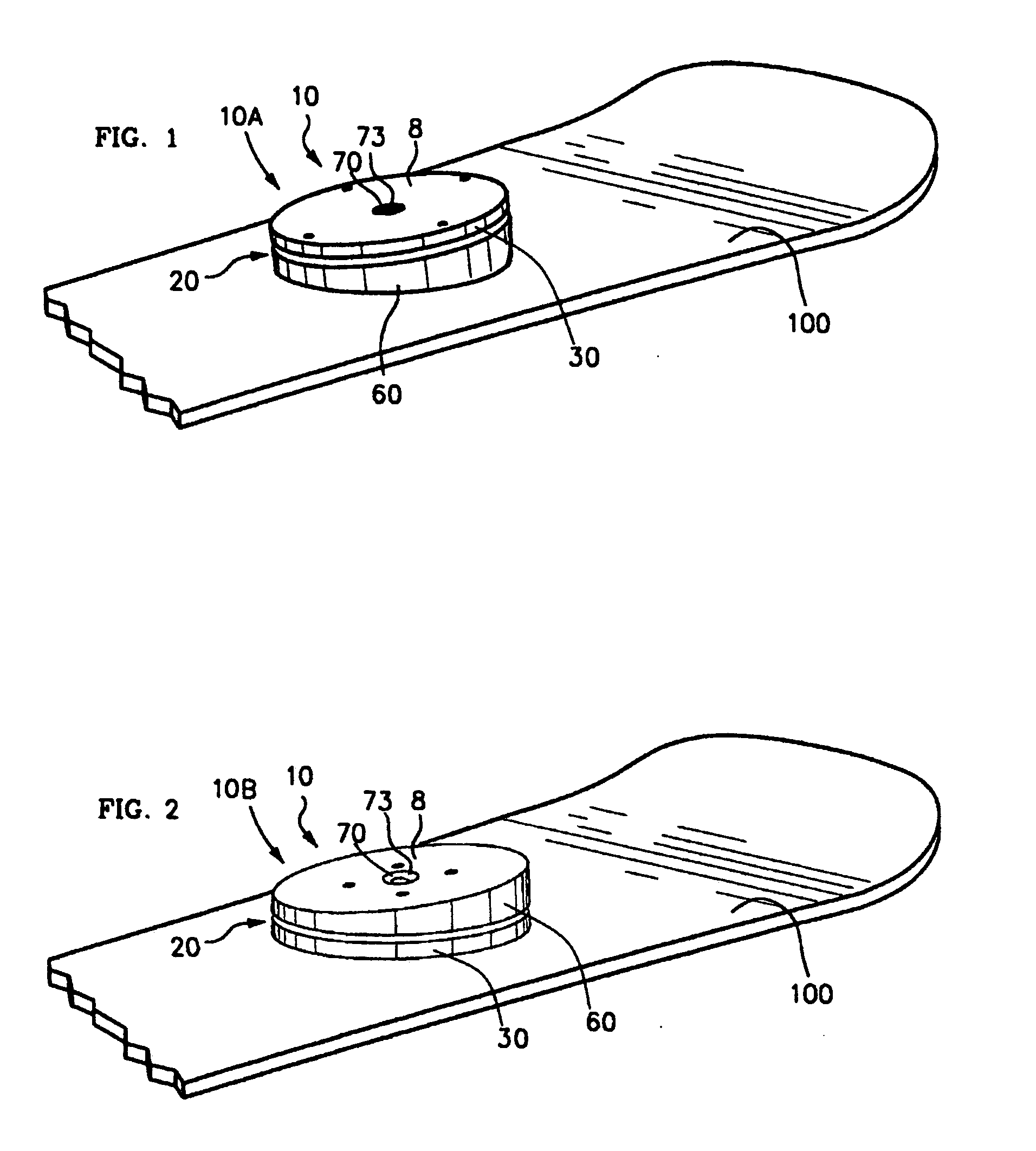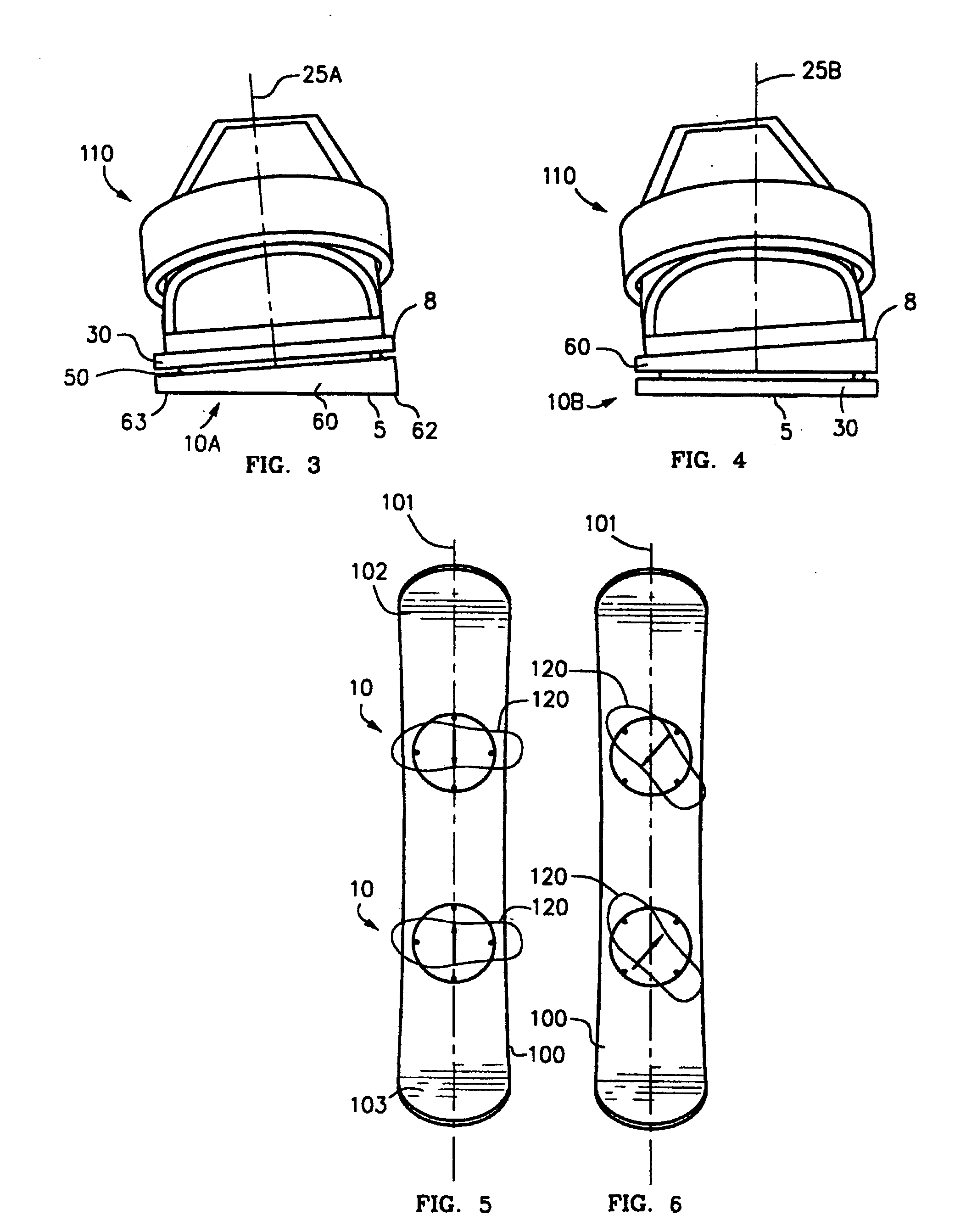Swivelable mount for attaching a binding to a snowboard
- Summary
- Abstract
- Description
- Claims
- Application Information
AI Technical Summary
Benefits of technology
Problems solved by technology
Method used
Image
Examples
Example
[0039]FIG. 3 is a back view of first embodiment of mount 10, mount 10A, with an exemplary binding 110 attached to upper surface 8. Mount 10A includes swivel assembly 20 comprised of cant disk 60 and plate 30, such that swivel assembly 20 has a swivel axis 25A that is not normal to the plane of snowboard 100 and generally parallel to the rider's leg when standing erect.
Example
[0040]FIG. 4 is a back view of second embodiment of mount 10, mount 10B, which includes cant disk 60 disposed above first plate 30, such that swivel assembly 20 has a swivel axis 25B that is normal to the plane of snowboard 100, and not normal to the mounting plane. Swivel axis 25B is not generally parallel to the rider's leg when standing erect.
[0041] First embodiment 10A and second embodiment 10B each provide the rider with a different riding behavior of snowboard 100, which may be understood with reference to FIG. 5.
[0042]FIG. 5 is a top view of a pair of mounts 10 attached to snowboard 100. The outlines of the rider's boots 120 are superimposed. The arrows indicate the orientation of the cant, pointing toward thinnest (lowest) part 63. Boots 120 are generally transverse snowboard 100 (perpendicular to longitudinal axis 101) and canted toward each other. This may be called a “neutral stance,” which the rider would use to move forward down a moderate slope. The rider's weight is...
PUM
 Login to View More
Login to View More Abstract
Description
Claims
Application Information
 Login to View More
Login to View More - R&D
- Intellectual Property
- Life Sciences
- Materials
- Tech Scout
- Unparalleled Data Quality
- Higher Quality Content
- 60% Fewer Hallucinations
Browse by: Latest US Patents, China's latest patents, Technical Efficacy Thesaurus, Application Domain, Technology Topic, Popular Technical Reports.
© 2025 PatSnap. All rights reserved.Legal|Privacy policy|Modern Slavery Act Transparency Statement|Sitemap|About US| Contact US: help@patsnap.com



